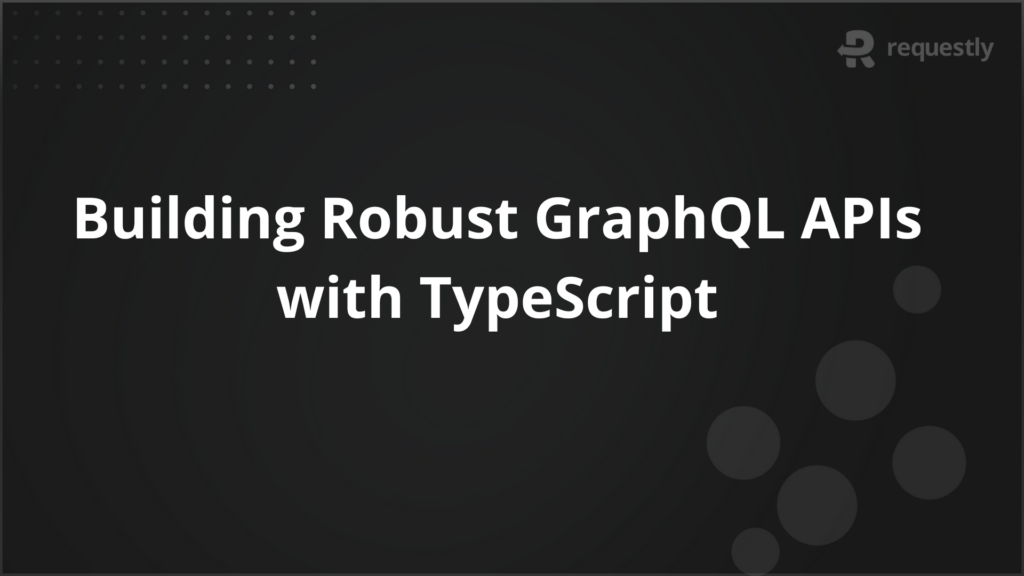Building Efficient Flask POST APIs: Tips, Techniques, and Debugging


Handling POST requests efficiently is a crucial skill when building web applications with Flask. POST requests allow clients to send data to the server, enabling functionalities such as user authentication, form submissions, file uploads, and more. Flask, being a lightweight and flexible Python web framework, provides straightforward tools to create and manage POST endpoints, making it ideal for both beginners and experienced developers.
This article delves into the essentials of working with POST requests in Flask, covering how to set up POST APIs, handle various data formats like JSON and form data, validate user inputs, and secure endpoints with authentication.
Understanding POST Requests in Flask
POST is one of the fundamental HTTP methods used to send data from a client to a server. Unlike GET requests, which retrieve data and expose parameters in the URL, POST requests transmit data within the request body, ensuring better security and supporting larger payloads.
In Flask, handling POST requests is essential for scenarios like form submissions, user authentication, file uploads, and APIs that accept data from users or other services.
Flask makes it simple to work with POST requests by allowing routes to explicitly declare which HTTP methods they accept using the methods parameter in the route decorator. By default, routes respond to GET requests, so to handle POST, the route must be configured accordingly.
Inside the view function, Flask provides the request object, which contains data sent in the POST request. You can access form data through request.form when the client submits URL-encoded form data. When JSON data is sent, Flask allows parsing it using request.get_json(). This flexibility enables Flask applications to accept diverse data formats with ease.
For example, a login form submission can use a POST request where the username and password are sent in the request body without appearing in the URL, enhancing security. Flask’s straightforward API lets developers easily extract and process such data to implement authentication or other functionalities.
Creating a Flask POST Endpoint
Creating a POST endpoint in Flask involves defining a route that explicitly accepts POST requests and writing a view function to handle the incoming data. This is done by specifying the methods parameter in the @app.route() decorator and including “POST” in the list.
Here’s a basic example demonstrating how to create a POST endpoint:
from flask import Flask, request, jsonify
app = Flask(__name__)
@app.route('/submit', methods=['POST'])
def submit_data():
data = request.get_json()
if not data:
return jsonify({"error": "No data provided"}), 400
# Process the data as needed
return jsonify({"message": "Data received", "data": data}), 201
In this example:
- The route /submit is set up to listen for POST requests.
- The view function submit_data uses request.get_json() to parse the JSON payload sent in the body of the request.
- A simple validation checks if any data was sent; if not, it returns a 400 Bad Request error.
- Upon successful receipt, the server responds with a confirmation message and the received data, along with a 201 Created status code indicating successful resource creation.
This simple pattern can be extended to handle various types of POST data, including form data (request.form), file uploads, and more complex JSON structures. Flask’s flexible request handling makes it straightforward to implement and manage POST API endpoints tailored to the needs of your web application.
Sending and Receiving JSON Data in POST Requests
JSON (JavaScript Object Notation) is the most widely used format for transmitting data between a client and server in modern web applications. When working with Flask APIs, handling JSON data in POST requests is a common and essential task.
To receive JSON data in a Flask POST endpoint, the client must send the request with the Content-Type header set to application/json. Flask provides the request.get_json() method to parse this JSON payload into a Python dictionary or list, depending on the structure of the incoming data.
Here is an example of handling JSON data in a POST route:
from flask import Flask, request, jsonify
app = Flask(__name__)
@app.route('/json-data', methods=['POST'])
def json_data():
data = request.get_json()
if data is None:
return jsonify({"error": "Invalid or missing JSON data"}), 400
# Process the data (for example, extract fields)
name = data.get("name")
age = data.get("age")
return jsonify({"message": f"Received data for {name}, age {age}."}), 200
In this example:
- The request.get_json() method parses the incoming JSON data safely. It returns None if the data is missing or malformed.
- Data fields like “name” and “age” are extracted from the parsed dictionary.
- The server sends a custom JSON response confirming receipt of the data.
If the content type is incorrect or the data is not valid JSON, Flask will not parse it automatically. In such cases, developers can handle errors gracefully by checking the return of get_json() or inspecting the headers with request.is_json.
Using JSON for POST requests is preferred when transferring structured data because it is lightweight, easy to read, and widely supported across platforms and languages. Flask’s native support for JSON handling makes it a smooth experience to build modern RESTful APIs.
Processing Form Data in Flask POST Handlers
When a user submits a form in a web application, the data is typically sent to the server using a POST request. In Flask, this form data is easily accessible through the request.form attribute, which behaves like a dictionary containing key-value pairs where keys correspond to the names of the form fields.
Here’s a simple example of handling form data in a POST request:
from flask import Flask, request, render_template
app = Flask(__name__)
@app.route('/submit-form', methods=['POST'])
def submit_form():
name = request.form.get('name')
email = request.form.get('email')
message = request.form.get('message')
# Process the form data as needed
print(f"Name: {name}, Email: {email}, Message: {message}")
return render_template('success.html', name=name)
In this example:
- The form data is sent via POST to the /submit-form endpoint.
- request.form.get() safely fetches the values of form fields by their name attributes.
- The retrieved data can then be processed, stored, or used to render a response.
Form submissions usually send data as application/x-www-form-urlencoded or multipart/form-data (especially when files are involved). Regardless, Flask abstracts data access through request.form, making handling form inputs straightforward.
This method is essential for implementing user input features like contact forms, surveys, or login pages. Proper validation and processing of this data ensure reliability and security in Flask applications.
Ensuring Data Integrity: Validation Strategies for POST Requests
To maintain the accuracy and security of data received through POST requests, it is essential to implement a range of validation techniques that ensure inputs are both correct and safe before processing.
- Fundamental Checks on User Inputs: Begin by verifying that all expected fields exist and contain data of the appropriate basic type. This includes checking lengths for strings, ensuring numeric values are within acceptable limits, and confirming required fields are not empty.
- Schema Enforcement with Pydantic Models: Utilize Pydantic to create clear data models that automatically validate incoming data structures. This method provides type enforcement, default values, and error reporting with minimal boilerplate.
- Applying Type and Range Restrictions: Impose stricter constraints by enforcing precise types and value ranges to prevent invalid or harmful data from entering your system. For example, ensuring an age field is an integer between 0 and 120.
- Pattern Validation Using Regular Expressions: Employ regex expressions to validate fields requiring specific formats such as emails, phone numbers, or unique identifiers, helping ensure data follows predefined standards.
- Deep Validation of Complex Data Structures: When dealing with nested JSON objects or lists within POST requests, implement recursive validation logic or schemas that ensure every nested element adheres to expected rules.
- Utilizing Flask-Compatible Validation Extensions: Take advantage of Flask extensions like Flask-WTF or Marshmallow that simplify input validation with reusable validators, form integration, and automatic error handling.
- Cleaning and Sanitizing Inputs to Prevent Security Risks: Beyond validating correctness, sanitize all inputs by removing harmful characters or scripts to protect against injection attacks and maintain data integrity.
Managing File Uploads through Flask POST Requests
Handling file uploads is a common feature in web applications, and Flask provides a simple yet powerful way to manage this functionality through POST requests.
To upload files, your HTML form must include an input element with type=”file” and specify the form’s enctype as “multipart/form-data”. This ensures that files are transmitted properly to the server.
Here is an example of a basic HTML form for file uploads:
<form action="/upload" method="POST" enctype="multipart/form-data">
<input type="file" name="file" />
<input type="submit" value="Upload" />
</form>
On the Flask side, you create a route that listens for POST requests and handles the uploaded file using the request.files object:
from flask import Flask, request
from werkzeug.utils import secure_filename
import os
app = Flask(__name__)
app.config['UPLOAD_FOLDER'] = './uploads'
@app.route('/upload', methods=['POST'])
def upload_file():
if 'file' not in request.files:
return 'No file part in the request', 400
file = request.files['file']
if file.filename == '':
return 'No file selected', 400
filename = secure_filename(file.filename)
filepath = os.path.join(app.config['UPLOAD_FOLDER'], filename)
file.save(filepath)
return 'File uploaded successfully'
Key points to consider:
- File security: Use secure_filename() from Werkzeug to sanitize filenames and prevent unsafe file paths.
- File storage: Define a dedicated upload directory and save files securely.
- Validations: Check for file presence, empty filenames, and consider implementing file type and size validations for added security.
- Avoid overwriting: Generate unique filenames or use timestamps/UUIDs to prevent overwriting existing files.
Additionally, Flask allows configuring the maximum size of uploads using app.config[‘MAX_CONTENT_LENGTH’] to prevent denial-of-service attacks due to large files.
Proper handling and validation of file uploads help build a robust Flask application that safely accepts and stores user files via POST requests.
Implementing Authentication in POST Routes
Securing POST routes in a Flask application is crucial to ensure that only authorized users can perform sensitive actions such as submitting data, updating resources, or accessing protected endpoints. Implementing authentication in these routes typically involves verifying user credentials and managing user sessions or tokens.
One common approach is to use the Flask-Login extension, which simplifies user session management. It allows you to protect routes by requiring users to be logged in before they can make POST requests. This is done by applying the @login_required decorator to your view functions.
Here’s a basic example of protecting a POST route using Flask-Login:
from flask_login import login_required, current_user
@app.route('/post-data', methods=['POST'])
@login_required
def post_data():
# The current_user object gives access to the logged-in user
data = request.get_json()
# Process data for the authenticated user
return jsonify({"message": f"Data received from {current_user.username}"})
For token-based authentication, especially in APIs, using JSON Web Tokens (JWT) is popular. With libraries like PyJWT or Flask-JWT-Extended, you can require clients to include a valid access token in the Authorization header of POST requests. A custom decorator or middleware then validates this token and grants or denies access accordingly.
Example of a token-protected POST endpoint:
from flask_jwt_extended import jwt_required, get_jwt_identity
@app.route('/secure-post', methods=['POST'])
@jwt_required()
def secure_post():
current_user = get_jwt_identity()
data = request.get_json()
# Process request for authenticated user
return jsonify({"message": f"Hello {current_user}, your data was received."})
When implementing authentication, remember to:
- Securely store user credentials, hashing passwords with strong algorithms (e.g., bcrypt).
Protect sensitive endpoints by enforcing authentication decorators. - Use HTTPS to encrypt data in transit.
- Handle authentication errors gracefully by returning appropriate HTTP status codes and messages.
- Implement session management or token expiration to enhance security.
By integrating authentication into your POST routes, you can safeguard your Flask app from unauthorized access and protect user data effectively.
Common Challenges with Flask POST Requests
Handling POST requests in Flask can sometimes lead to unexpected issues that hinder smooth application functionality. Awareness of these common challenges helps in quicker troubleshooting and more robust API design. Here are some frequent problems developers encounter:
- Incorrect Route Configuration: One of the simplest yet most common mistakes is misconfiguring the route or forgetting to specify methods=[‘POST’]. Without this, Flask will not route POST requests properly to the intended view function.
- Missing or Improper Headers: POST requests often require specific headers like Content-Type. Omitting or incorrectly setting these, especially for JSON payloads, can prevent Flask from parsing the request data.
- Malformed Request Payloads: Sending improperly structured JSON or form data can cause Flask to fail reading the input, resulting in errors or unexpected behavior on the server.
- Server Not Receiving Data as Expected: Sometimes the data does not reach the server due to client-side issues, such as incorrect usage of fetch, axios, or Postman, or missing input names in HTML forms.
- Debugging Difficulties: Without proper logging or debugging tools, it can be challenging to understand why a POST request is failing, especially when the API silently ignores the payload or returns generic errors.
- Security and Validation Gaps: Failing to validate and sanitize POST data can lead to injection attacks, unexpected crashes, or data corruption.
To effectively address these challenges, developers can:
- Double-check route method declarations.
- Verify request headers and payload formats.
- Use debugging tools like Postman or browser DevTools to simulate and inspect POST traffic.
- Add detailed logging statements to capture request content.
- Implement thorough validation and error handling within POST routes.
Understanding and anticipating these common obstacles will significantly improve the reliability and maintainability of Flask POST request handling in your applications.
Leveraging Requestly HTTP Interceptor for Debugging and Testing
Requestly is a versatile HTTP interception tool that empowers developers and QA teams to inspect, modify, and mock network requests and responses in real time. It acts as a bridge between the client and server, enabling detailed control over API interactions without modifying backend code.
Using Requestly, you can:
- Intercept and Inspect Requests: View the full details of every HTTP request and response, including headers, payloads, and status codes. This transparency helps diagnose issues quickly.
- Modify Requests on the Fly: Change headers, query parameters, or request bodies before they reach the server, allowing testing of different scenarios such as authentication failures or data variations.
- Mock API Responses: Simulate server responses by overriding or creating mock data, making it easier to test edge cases and failure modes without needing backend changes.
- Set Up Redirects: Redirect certain requests to alternative URLs, useful for testing against staging environments or local servers.
- Organize and Share Rules: Define modification rules and share them across teams to ensure consistent testing workflows.
Requestly is available as a browser extension and a desktop app, making it flexible for frontend and backend testing. When integrated into the Flask API development workflow, it drastically reduces the debugging cycle by exposing network behaviors and enabling quick experimentation with request and response data.
For example, during Flask POST endpoint testing, Requestly can intercept outgoing requests to verify payload structure, simulate server errors by mocking responses, or enforce header manipulations to test authentication flows.
Overall, Requestly enhances API quality assurance by providing a powerful yet user-friendly interface for comprehensive network request control and inspection.
Conclusion
Mastering POST requests in Flask is a vital skill for building secure and interactive web applications. This article has explored essential aspects such as setting up POST endpoints, handling JSON and form data, validating inputs to ensure data integrity, and securing routes through authentication. It also addressed common challenges developers face and highlighted how tools like Requestly HTTP Interceptor can significantly streamline debugging and testing processes.
By adopting best practices in validation and leveraging powerful debugging tools, developers can create reliable APIs that handle user data safely and efficiently. Continuous testing and careful error handling will further enhance application robustness, providing users with a seamless and secure experience. Embracing these strategies ensures that Flask POST APIs remain maintainable, secure, and ready for production environments.

Contents
- Understanding POST Requests in Flask
- Creating a Flask POST Endpoint
- Sending and Receiving JSON Data in POST Requests
- Processing Form Data in Flask POST Handlers
- Ensuring Data Integrity: Validation Strategies for POST Requests
- Managing File Uploads through Flask POST Requests
- Implementing Authentication in POST Routes
- Common Challenges with Flask POST Requests
- Leveraging Requestly HTTP Interceptor for Debugging and Testing
- Conclusion
Subscribe for latest updates
Share this article
Related posts




















